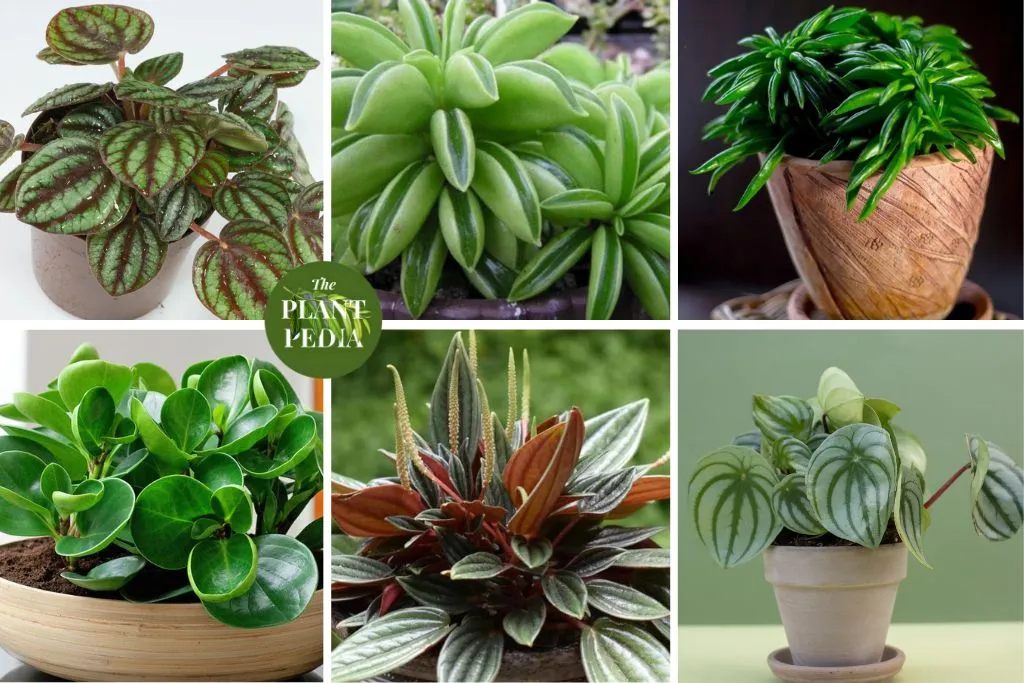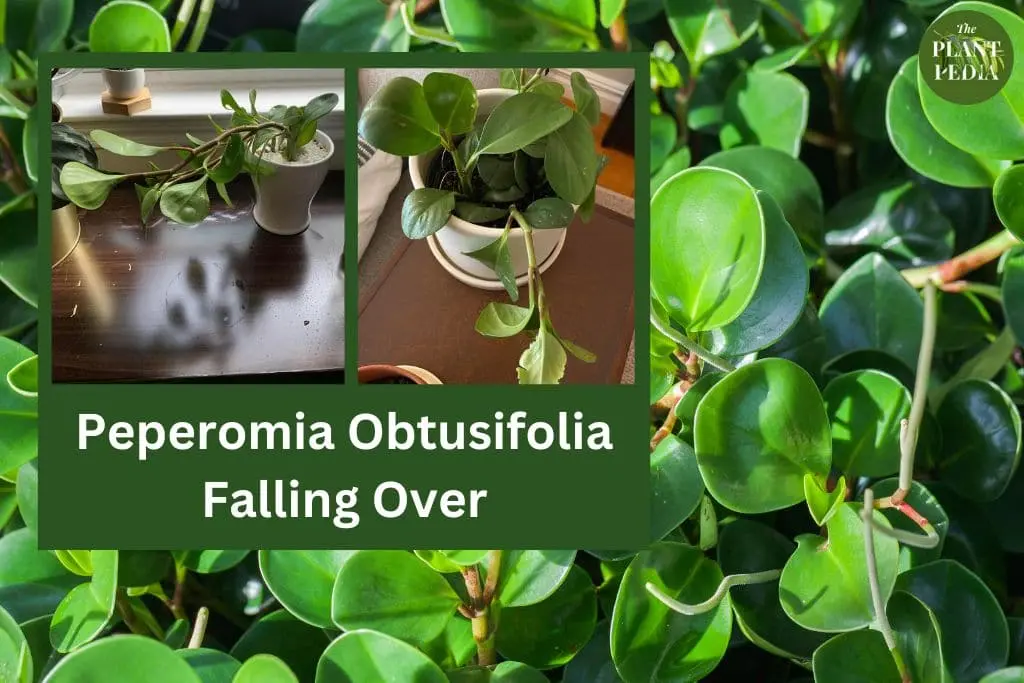Peperomias are charming houseplants known for their ornamental foliage and ease of care. However, if you notice your peperomia drooping, it may be a cause for concern.
Several factors can contribute to this issue, ranging from environmental conditions to watering practices.
In this complete guide, we will delve into the various reasons why your peperomia might be drooping and provide detailed solutions to help your plant thrive once more.
Understanding Peperomia: A Brief Overview
Before we delve into the reasons behind drooping peperomia, it’s essential to understand the basic requirements of this plant.
Peperomias belong to the Piperaceae family, which includes more than 1,000 species. These plants are native to tropical and subtropical regions, often found in Central and South America.
They are characterized by their thick, succulent-like leaves, making them well-suited for indoor cultivation.
Common Types of Peperomia

Here are some of the most common types of peperomia plants:
- Baby rubber plant (Peperomia obtusifolia): This is one of the most popular peperomias, and for good reason. It is easy to care for and has attractive, glossy green leaves. There are also many variegated cultivars available.
- Trailing jade (Peperomia rotundifolia): This peperomia has small, round, fleshy leaves that cascade down the sides of the pot. It is a good choice for hanging baskets or terrariums.
- Emerald ripple peperomia (Peperomia caperata): This peperomia has small, textured leaves with a rippled appearance. The leaves are often variegated with shades of green, silver, and red.
- Raindrop peperomia (Peperomia polybotrya): This peperomia has large, heart-shaped leaves that resemble raindrops. The leaves are often variegated with shades of green, white, and pink.
- String of turtles (Peperomia prostrata): This peperomia has small, patterned leaves that resemble the shells of turtles. It is a good choice for hanging baskets or terrariums.
- Peperomia Hope (Peperomia tetraphylla): This peperomia has trailing stems with small, green fleshy leaves that grow in groups of three or four. The leaves are often variegated with shades of red and pink.
- Peperomia graveolens (Ruby Glow peperomia): This peperomia has small, oval-shaped leaves with a metallic sheen. The leaves are often variegated with shades of red and pink.
- Peperomia angulata (Beetle peperomia): This peperomia has small, triangular-shaped leaves with a bumpy texture. The leaves are often variegated with shades of green, silver, and red.
Read: 60 Peperomia Varieties (Types of Radiator Plant) For Indoor.

Why Is My Peperomia Drooping? Reasons & Solutions
1. Improper Watering Practices
Improper watering is a common issue that can lead to drooping peperomia. Overwatering can suffocate the roots, causing them to rot and impeding their ability to absorb nutrients and water effectively.
On the other hand, underwatering can result in dehydration and wilting.
To prevent overwatering, it’s crucial to establish a regular watering schedule. Allow the top inch of soil to dry out before watering again.
Ensure that the pot has proper drainage holes, and consider using a saucer to catch any excess water that may accumulate.
2. Lighting Issues
Peperomias are adapted to thrive in indirect or filtered light conditions. Exposure to intense, direct sunlight can lead to sunburned leaves and subsequent drooping.
If you notice your peperomia is placed in an area with harsh lighting, it’s likely contributing to its drooping state.
To rectify this, relocate your peperomia to a spot with bright, indirect light. If natural light is limited, consider incorporating grow lights to supplement and provide the optimal light conditions for your plant.
3. Temperature Fluctuations
Peperomias are sensitive to abrupt changes in temperature. Sudden drops or spikes in room temperature can stress the plant, leading to drooping leaves.
It’s essential to provide a stable environment to promote healthy growth.
To mitigate temperature-related stress, avoid placing your peperomia near drafty windows or in close proximity to heating or cooling vents.
Maintaining a consistent room temperature within the recommended range of 65-75°F (18-24°C) will help create an environment conducive to your plant’s well-being.
4. Root-Bound Conditions
As peperomias grow, their roots can outgrow their current container. When this happens, the roots become restricted, hindering proper growth and causing the plant to droop.
To address this issue, consider repotting your peperomia into a slightly larger container with well-draining soil. Before transplanting, gently loosen the roots to encourage healthy growth.
This allows your peperomia to stretch out and establish a more stable root system.
5. Pests and Diseases
Pests and diseases can significantly impact the health of your peperomia, leading to stress and drooping. Common culprits include spider mites, mealybugs, aphids, and various fungal infections.
To combat pests, regularly inspect your plant for signs of infestation. If pests are detected, treat your peperomia with insecticidal soap or neem oil, ensuring to cover both sides of the leaves.
Additionally, good air circulation and proper watering practices can help prevent fungal issues.
6. Nutrient Deficiency
A nutrient deficiency can weaken your peperomia, resulting in drooping leaves and overall diminished vigor. Look out for pale or yellowing foliage as an indication of this issue.
To address nutrient deficiencies, provide your peperomia with a balanced, water-soluble fertilizer during the growing season.
Follow the recommended dosage on the packaging to ensure your plant receives the essential nutrients it needs to thrive.
By addressing these specific factors in detail, you’ll be better equipped to identify and remedy the cause of your peperomia’s drooping, ultimately fostering a healthy and flourishing plant.
Related FAQs:
Can I save my drooping peperomia, or is it too late?
In most cases, drooping peperomias can be saved with proper care and attention. Identify the underlying issue causing the drooping, such as overwatering, lighting problems, or pests, and take appropriate corrective measures.
Trim any severely damaged leaves and be patient as your plant recovers. With the right care, peperomias are resilient and can bounce back.
How can I tell if my peperomia is overwatered or underwatered?
To determine if your peperomia is overwatered, check the soil’s moisture level. If it feels consistently soggy or the pot lacks proper drainage, it’s likely overwatered.
If the soil is dry several inches down and the leaves are wilting, it may be underwatered. Adjust your watering routine accordingly to maintain consistent moisture without overwatering.
Should I prune the drooping leaves on my peperomia?
Yes, it’s a good idea to prune drooping or damaged leaves on your peperomia. Use clean, sharp scissors or pruning shears to trim the affected leaves at their base.
This not only improves the plant’s appearance but also encourages new growth and redirects the plant’s energy to healthier foliage.
How often should I fertilize my peperomia to prevent nutrient deficiencies?
Fertilizing your peperomia depends on the specific type of fertilizer you’re using. In general, apply a balanced, water-soluble fertilizer every 4-6 weeks during the growing season (spring and summer).
However, always follow the manufacturer’s recommendations for the fertilizer you’re using to avoid overfertilization, which can harm the plant.
Can I use tap water to water my peperomia, or should I use distilled or filtered water?
Peperomias are relatively tolerant of tap water, but the quality of tap water can vary greatly depending on your location.
If your tap water is high in minerals (hard water) or contains chlorine or other chemicals, it’s advisable to use distilled or filtered water.
Allowing tap water to sit for 24 hours can also help dissipate chlorine before using it on your plants.
Is it normal for peperomia plants to drop leaves occasionally even if they are healthy?
Yes, it is normal for peperomia plants to shed older leaves as part of their natural growth process.
However, if you notice an excessive and sudden drop in leaves, it may indicate an underlying issue that needs attention, such as lighting, watering, or pests.
Can I propagate my drooping peperomia to save it?
Yes, propagating peperomias is a viable option to save a drooping plant. You can propagate peperomias through leaf cuttings or stem cuttings.
Ensure the cuttings have healthy, firm leaves or stems, and follow proper propagation techniques to increase your chances of success.
Conclusion
By understanding the specific needs of your peperomia and addressing potential issues promptly, you can revive your drooping plant and promote healthy growth.
Remember, patience and consistent care are key to ensuring your peperomia thrives in its indoor environment.
With the right attention and adjustments, you’ll soon enjoy the lush, vibrant foliage that makes peperomias such cherished houseplants.
